Fenestration: Solving Renovation Issues
Other Fenestration Components
As noted previously, the NFRC takes into account all components of a fenestration unit, including the frame construction and the spacers between layers of glass in an insulated glass unit (IGU). The reason is that the material used in these frames and spacers can make a notable difference. To achieve optimal performance in the fenestration system, all of the variables (center of glass, frame, and edge of glass) must be optimized to achieve improved u-values and thermal performance. The spacers used will affect the edge of glass and center of glass conditions, while the construction of the frames will directly affect the overall performance.
Glazing Spacers
While the use of spacers is necessary and somewhat dictated by the IGU fabrication process, one of the biggest variables is the selection of spacer material. Typically, aluminum or stainless steel has been used for cost and strength reasons. However, these materials are very good at conducting heat, which means they can create a small “thermal bridge” around the perimeter of the IGU glazing. That will affect the temperature of the edge of the glass and may cause it to be colder than desired, which can lead to condensation forming along the edges. This thermal bridging around the glass edge can also affect the temperature of the center of the glass, making the whole assembly less energy efficient and less comfortable for people to be near. The preferred condition is to maintain a “warm edge” around the glazing. “Warm edge” refers to the thermal interaction between the panes of glass, window frame, and spacer at the sealed edge of an IGU. The lower the energy loss between the inside and outside of the window, the warmer the edge. Warmer edges also reduce the likelihood of water vapor condensation around the perimeter of the glass.
In the interest of creating a warm edge spacer, manufacturers have developed hybrid products that combine the benefits of high-performance polymers and thin stainless steel. The polymer component provides insulation for the spacer, while the continuous stainless steel back provides an excellent inorganic surface for sealant adhesion, creating a gas/moisture barrier. Such a spacer has also been optimized for fabricating IGUs to be sure they retain commonly used inert gases (e.g. argon) and are fully protected against corrosion. They are even offered in a range of colors to complement the colors of glass and glazing frames, while holding up over time to the effects of ultraviolet (UV) radiation from the sun. The results have paid off since independent testing has shown a marked difference in U-factors in glazing that use hybrid spacers compared to using aluminum or stainless steel. The tested difference can be on the order of 10 to 15 percent or more improvement. In a recent project, the well-known energy- efficient Bullit Center in Seattle, Washington, Javier Bonilla, a glazing contractor with Goldfinch Bros. Inc., noted, “We were able to improve the overall U-factor of the window by replacing the aluminum spacer with a hybrid spacer. The overall U-factor of the window unit improved from 0.25 to 0.17.”
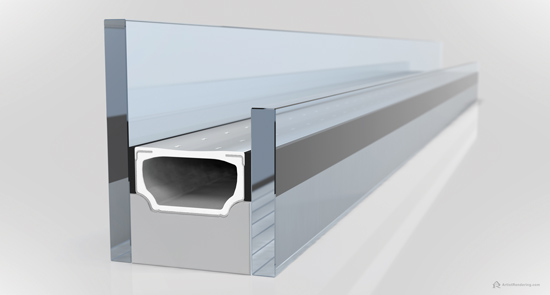
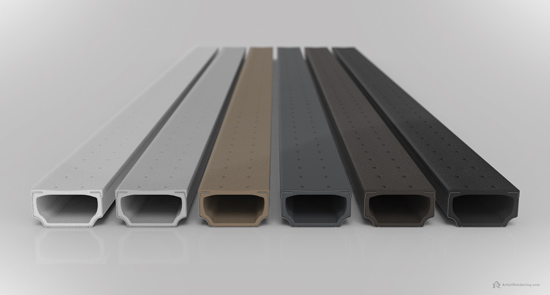
Images courtesy of Technoform North America
Hybrid spacers in insulated glass units produce notably better thermal performance results than aluminum or stainless steel spacers and are available in a wide range of colors to suit design needs.
Fenestration Frame Thermal Breaks
Just as the edge of the glass can be affected by thermal bridging, the frame of an aluminum or other metal window unit can conduct more heat through it than desired if something isn’t done to interrupt it. A thermal break is meant to do just that—stop or slow the flow of heat through the frame of a fenestration unit. This is done by separating the inside portion of the metal frame from the outside portion around the entire perimeter of the unit. In order to maintain the integrity of the window unit, the two halves still need to be joined, just not with metal. Rather, a low heat-conductive material is used with enough rigidity to be effective but enough insulation value to reduce heat flow.
The response by manufacturers has been to create structural insulating strips that can be custom extruded to fit window frame profiles and produce highly favorable thermal performance. Some even incorporate leg extensions for sealing against gaskets and screw channels for corner assembly options for example. By improving the thermal performance of the overall system, these insulating strips can help reduce the energy requirements of the building, increase the comfort of the indoor environment, and reduce health concerns associated with condensation on the windows. From a design standpoint, the continuous separation provided by the structural insulating strip also allows for the interior and exterior portions of the windows to be different colors or finishes.

Image courtesy of Technoform North America
Structural insulation strips can be custom extruded to allow window units to maintain thermally separated interior and exterior frames that can also be finished differently.
Notice

www.efcocorp.com

www.extechinc.com
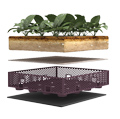
www.firestonebpco.com
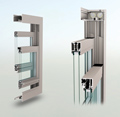
www.grahamwindows.com
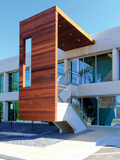
www.guardian.com/commercial
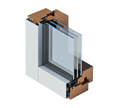
www.menckwindows.com/products/overview/

www.technoform.us









